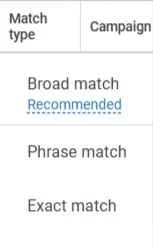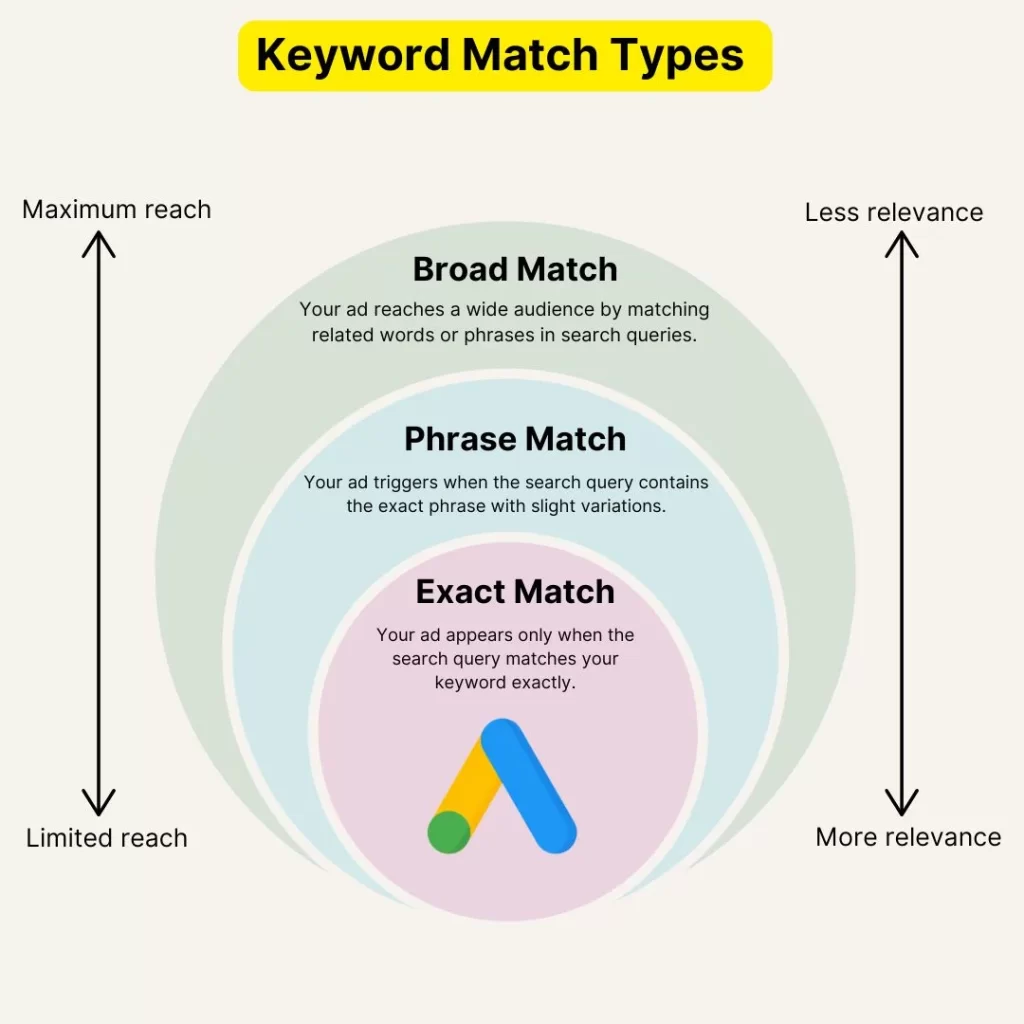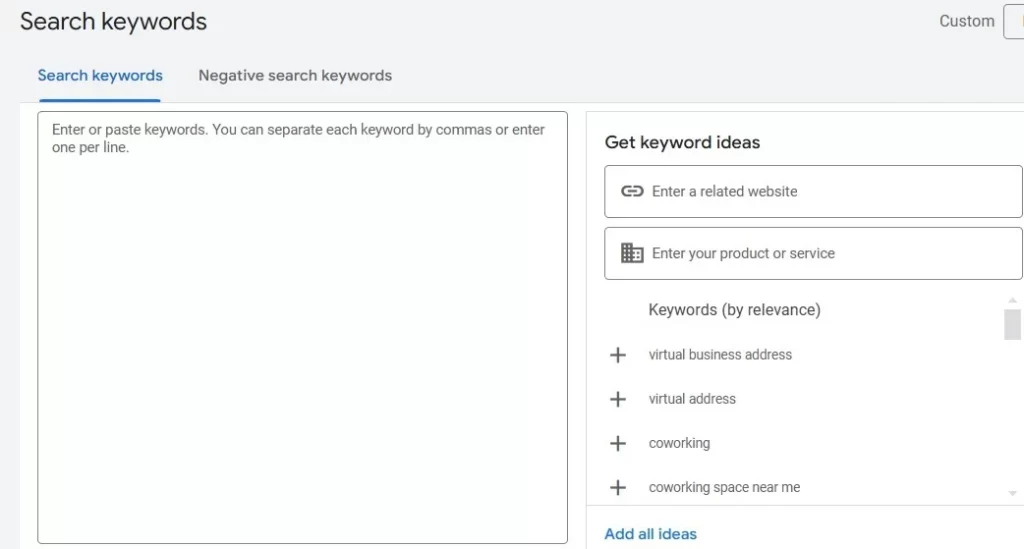How to Choose the Right Keyword Match Types for Google Ads Success!
Introduction
Managing Google Ads campaigns effectively requires an understanding of keyword match types, which determine the searches for which your ads will appear. Each match type offers unique advantages, allowing businesses to align their campaigns with specific goals. Match types should be chosen carefully to ensure maximum reach and visibility. Additionally, campaigns should be regularly monitored and optimized to ensure optimal performance. Here’s a comprehensive guide to mastering keyword match types for Google Ads success.
1. Overview of Keyword Match Types
Google Ads provides three main keyword match types, each serving different targeting precision levels:
- Broad Match: Displays ads for searches related to your keywords, even if the phrasing differs. It’s ideal for reaching a wide audience but attracts irrelevant traffic.
- Phrase Match: Target searches that include your exact keyword phrase, while allowing for variations before or after. This approach strikes a balance between reaching a wider audience and maintaining relevance.
- Exact Match: Ads appear only when the search term matches your keyword exactly, offering high precision but a narrower audience.

Using these match types strategically can influence click-through rates (CTR), cost-per-click (CPC), and overall ad effectiveness.
2. Benefits and drawbacks
Broad Match:
- Benefit: Increase visibility, useful for initial campaigns to gather data.
- Drawback: This may attract irrelevant clicks, inflating costs.
Phrase Match:
- Benefit: Captures intent more effectively while still offering flexibility.
- Drawback: Limited reach compared to broad matches.
Exact Match:
- Benefit: High ROI due to relevance and precise targeting.
- Drawback: Limited impressions and potential loss of long-tail opportunities.

3. Strategies for implementation.
This focuses on starting with broad keyword match types and refining them to increase efficiency and relevance in Google Ads campaigns.
Here’s how it works:
A. Begin with a Broad Match for Data Collection
When launching a campaign, broad match keywords cast a wide net. This allows your ads to appear for various search terms related to your chosen keywords. This phase is invaluable for
gathering insights about user behaviour, identifying which search queries trigger your ads, and discovering high-performing keywords. While broad match may lead to irrelevant traffic, the data it provides is essential for making informed decisions.
Example:
If your broad keyword is “digital marketing,” your ad might show for searches like “online marketing tips” or “learn internet marketing.” These queries can reveal the types of users engaging with your ads and their intent.
B. Analyze the Results
Once the campaign has run for a while, analyze the data to determine:
- Which queries generate high click-through rates (CTR) and conversions.
- Keywords that attract irrelevant or low-quality traffic, which can be added as negative keywords to filter out unwanted impressions.
Tools to Use:
Google Ads provides a Search Terms report, which helps identify how users find your ads and which terms yield positive results.
C. Transition to Phrase and Exact Matches
After identifying the most effective keywords, switch to phrase and exact match types to fine-tune your targeting. These match types ensure your ads are shown to more likely converts. Phrase match allows flexibility while retaining relevance, whereas exact match offers precision for high-intent queries.
Example:
If your analysis shows that “digital marketing agency in Bangalore” drives conversions, you could:
- Use phrase match for “digital marketing agency,” capturing related searches like “top digital marketing agency near me.”
- Use exact match for “digital marketing agency in Bangalore” to target users with clear intent.

4. Testing and optimization
Regular testing is a necessity part when it comes to maximizing ad performance.
- A/B Test Match Types: Compare performance across different match types to identify the most effective approach to your campaign goals.
- Monitor Metrics: Track CTR, conversion rates, and CPC to evaluate match types’ impact.
- Adjust Bids Accordingly: Allocate higher bids to exact match keywords that drive conversions and lower bids for exploratory broad match terms.
5. Best Practices for Success
- Align Keywords with Intent: Match types should reflect user intent. Use exact match for transactional queries and broad match for informational searches.
- Group Keywords Effectively: Organize keywords into tightly focused ad groups to improve quality scores and relevance.
- Adapt to Data: Analyze campaign performance regularly and adjust match types based on real-world results.
6. When to Use Each Match Type
- Broad Match: Best for brand awareness and exploratory campaigns.
- Phrase Match: Suitable for targeting specific product or service searches.
- Exact Match: Ideal for high-value, conversion-focused keywords.
7. Keyword Match Types and ROI
Combining different match types can create a robust Google Ads strategy. For example:
- Use broad matches to cast a wide net and gather insights.
- Refine targeting with phrase matches for middle-funnel users.
- Focus exact matches on high-intent, bottom-funnel conversions.
Effective management of match types can reduce wasted ad spend, increase quality scores, and boost ROI.
Conclusion:
Mastering keyword match types is key to creating tailored Google Ads campaigns that align with your audience’s intent and business objectives. With these strategies, you can optimize your campaigns and achieve measurable results. Understanding how to use match types can help you target the right people at the right time. It can also help minimize wasted expenditures and maximize returns on investment.



